Imagine stepping into a home that effortlessly adjusts to your lifestyle, offering unparalleled convenience, comfort, and security with a voice command, or a tap to your phone. That’s the promise of smart homes—network-connected residences where functions like temperature regulation, lighting, and security are managed with ease. Smart home essentials for new construction homes are transforming the way we live, offering a harmonious blend of comfort, efficiency, and control for the modern homeowner.
What is a Smart Home?
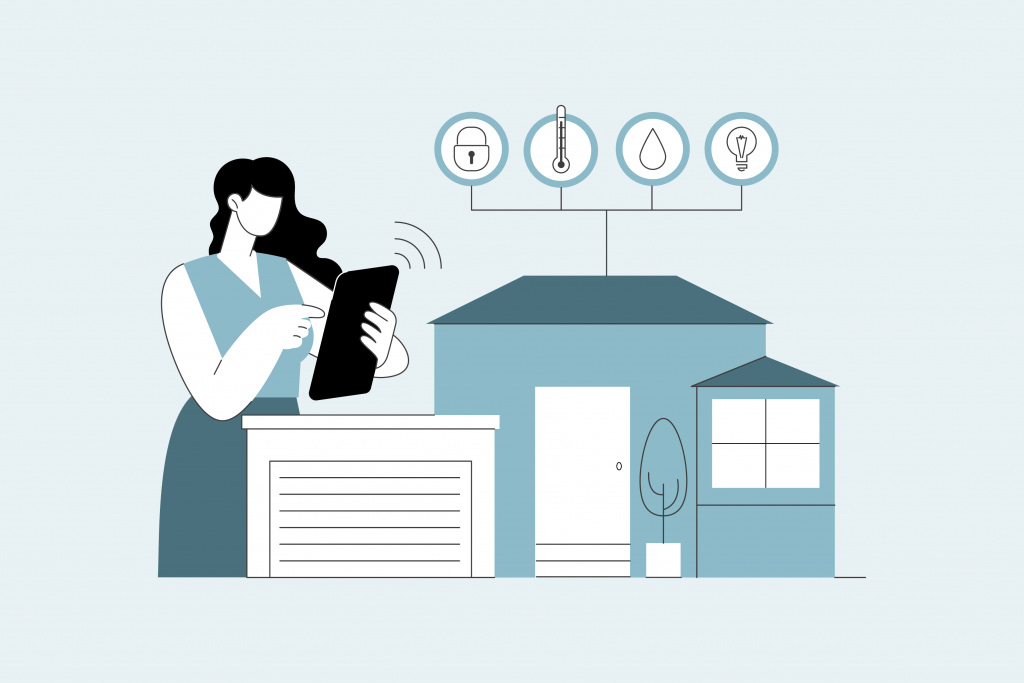
A smart home is a home equipped with interconnected appliances and devices that can be controlled remotely using a smartphone, tablet, or voice commands. These smart devices are interconnected through a central hub or app, allowing homeowners to automate tasks and personalize their living experience.
What Are The Benefits of Having a Smart Home?
Comfort, safety, convenience, and energy savings are major benefits of a smart home, offering peace of mind and a more comfortable lifestyle.
Here are some benefits of smart home technology:
- Increased Comfort: Smart thermostats can learn your temperature preferences and adjust automatically, keeping you comfortable without wasting energy. Smart lighting systems allow you to dim the lights or change colors to create the perfect ambiance.
- Convenience: Smart locks let you lock or unlock your doors from your phone, so you never have to worry about getting locked out. Smart plugs can be used to turn electronics on or off from anywhere, and smart speakers can be used to play music, control lights, and get information hands-free.
- Smart Security: Smart security systems can monitor your home for intruders and send you alerts if something is wrong. Smart cameras can be used to view live footage remotely and keep an eye on your property when you’re away.
- Energy Efficiency: Smart thermostats and lighting systems can help you save energy by automatically adjusting to your needs. Smart appliances can also be monitored to ensure they are operating efficiently.
Having a smart home can increase your home’s value and decrease your homeowner’s insurance cost, as they reduce the risk of damage to your home and some insurers offer discounts for installing smart devices. For instance, having a smart home security system can deter burglars and prevent theft, while a smart home water sensor can prevent water damage. Furthermore, a smart smoke detector that automatically alerts the fire department would provide a faster response and less damage in case of a fire.
Integrating Smart Technology in New Construction Homes
Integrating smart technology into your new construction home provides:
- Future-Proofing: Incorporating smart features during construction ensures that homes are equipped for future technological advancements.
- Seamless Integration: Building smart technology into new homes allows for seamless integration of devices and systems, avoiding the need for extensive retrofitting.
- Increased Home Value: Smart home features can increase the appeal and value of new construction homes in the market.
By integrating smart technology into new construction, homeowners can enjoy the benefits of a modern, efficient, and connected living space from the moment they move in. Builders can pre-wire homes for smart devices and install smart home systems as part of the new home construction process. This can make it easier and more affordable for homeowners to take advantage of the benefits of smart home technology.
Smart Home Essentials for Comfortable Living
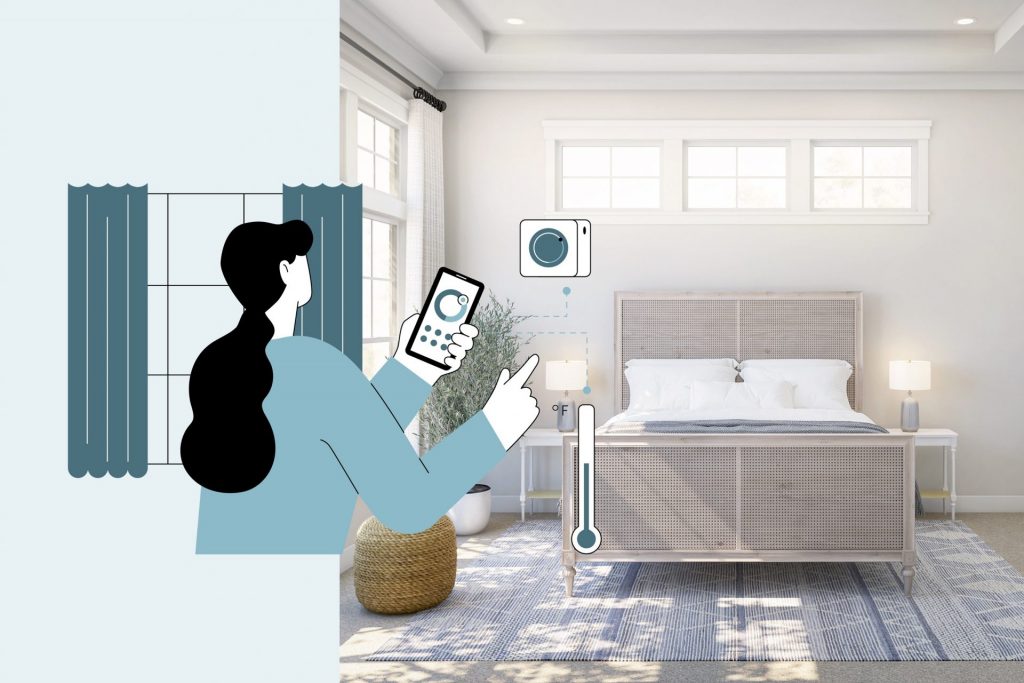
Creating a comfortable living environment in a smart home involves incorporating various devices and technologies. The essential smart home essentials contributing to comfort include:
- Smart Thermostats: Offer precise temperature control, energy efficiency, and remote access for maintaining an ideal indoor climate.
- Smart plugs and switches: Use an app to control your devices and appliances and enable remote control and scheduling of electrical devices with a smart plug, contributing to energy efficiency and offering convenience.
- Automated Lighting Systems: Provide customizable lighting schemes, dimming options, and scheduling for creating the desired ambiance and enhancing comfort.
- Voice-Controlled Assistants: Enable hands-free control of various devices, including entertainment systems, thermostats, and lighting, enhancing convenience and comfort.
- Smart Blinds or Shades: Allow remote or automated control of window coverings, regulating natural light and privacy to create a comfortable living environment.
- Smart Home Entertainment Systems: Integrate audio, video, and streaming services for personalized entertainment experiences, contributing to overall comfort and relaxation.
- Smart Air Purifiers or Quality Monitors: Enhance indoor air quality, contributing to a healthier and more comfortable living environment.
- Smart Mattresses or Sleep Technology: Offer features such as sleep tracking, adjustable firmness, and temperature control to optimize sleep quality and overall comfort.
Contribution to Comfort
- Personalization: These smart home devices enable personalized control and settings to cater to individual comfort preferences.
- Convenience: Automation, remote access, and voice control features contribute to a more convenient and comfortable living experience.
- Enhanced Ambiance: Smart technologies allow for customizable lighting, climate control, and entertainment, creating a more inviting and comfortable home environment.
By incorporating these essential smart home devices, homeowners can significantly enhance the comfort and livability of their residential spaces, creating a truly modern and comfortable living environment.
Smart Home Essentials for Convenience
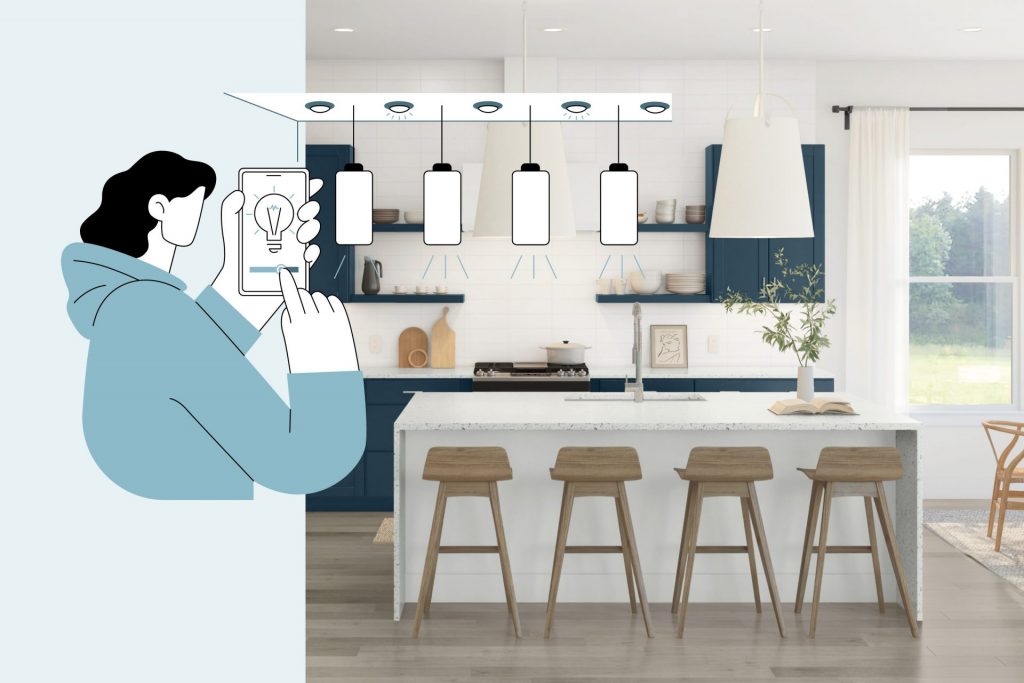
From robotic vacuums that keep floors spotless to smart ovens that perfectly cook meals, smart technology can help with an array of household chores, freeing up time for homeowners to focus on what they enjoy most. Automating these tasks means less manual work and more leisure time, a definite luxury in today’s fast-paced world.
Enhancing convenience in a modern household involves integrating specific smart home devices designed to streamline daily tasks and improve efficiency. Essential smart home devices for convenience include:
- Smart Hub: Acts as a central control unit, allowing seamless communication and unified control of various smart devices and systems through a single interface, enhancing overall convenience.
- Voice-Controlled Assistants (e.g., Amazon Echo, Google Home): Enable hands-free operation and voice commands for tasks such as setting reminders, managing schedules, controlling smart devices, and accessing information, significantly enhancing user-friendly interaction with the smart home ecosystem.
- Smart Plugs: Allow remote control and scheduling of electrical devices, contributing to convenience by enabling the automation of everyday appliances and electronics.
- Smart Doorbells: Provide real-time notifications, two-way communication, and remote access, enhancing convenience and security by allowing homeowners to monitor and interact with visitors from anywhere.
- Smart Vacuum Cleaners: Offer automated cleaning schedules, remote control, and autonomous operation, streamlining household chores and contributing to overall convenience.
- Smart Kitchen Appliances: Include smart refrigerators, ovens, and coffee makers with features such as remote monitoring, recipe suggestions, and automated functions, enhancing convenience in meal preparation and kitchen management.
- Smart Home Surveillance Systems: Enable remote monitoring and alerts for enhanced security and peace of mind, contributing to overall convenience by providing real-time visibility and control over home security.
Functionality and Contribution to Convenience
- Automation: Smart devices automate tasks such as scheduling, monitoring, and control, reducing manual intervention and enhancing convenience.
- Remote Access: Many smart devices offer remote access and control via smartphone apps, enabling users to manage their homes from anywhere, enhancing convenience and peace of mind.
- Hands-Free Operation: Voice-controlled assistants and other hands-free devices simplify interaction with the smart home, making daily tasks more user-friendly and convenient.
By integrating these essential smart home devices, homeowners can significantly enhance convenience, efficiency, and user-friendliness in their modern household, streamlining daily routines and tasks.
Smart Home Essentials for Security
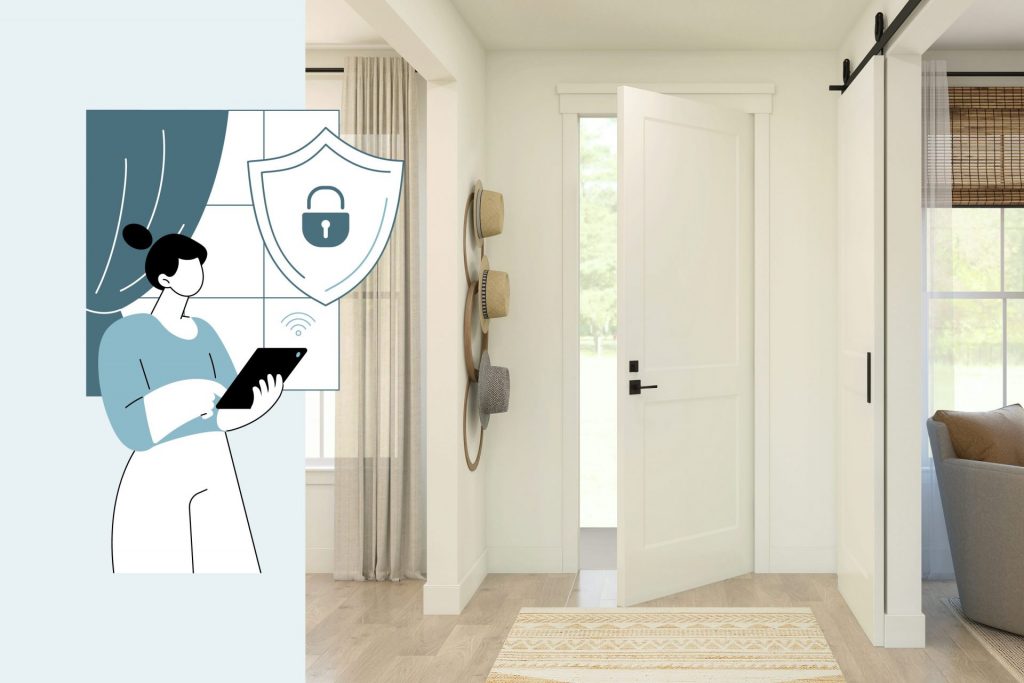
Ensuring the safety and protection of a smart home involves integrating specific devices and features designed to enhance security and provide peace of mind. The essential smart home devices and features for security include:
- Smart Security Cameras: Provide real-time monitoring, motion detection, and remote access, enhancing security by offering visibility and surveillance capabilities for the home and its surroundings.
- Smart Door Locks: Enable keyless entry, remote access control, and activity monitoring, enhancing security and convenience for homeowners while providing robust access control features.
- Smart Doorbell Cameras: Offer motion detection, two-way communication, and remote access, enhancing security by allowing homeowners to monitor and interact with visitors from anywhere.
- Smart Motion Sensors: Detect movement and trigger alerts or actions, enhancing security by providing an additional layer of awareness and automation for the smart home.
- Smart Home Alarm Systems: Offer comprehensive security features, including intrusion detection, alarm notifications, and professional monitoring options, contributing to enhanced security and peace of mind.
- Smart Window and Door Sensors: Provide notifications for open or closed status, enhancing security by enabling homeowners to monitor and secure entry points effectively.
- Smart Lighting with Security Integration: Feature motion-activated lighting, remote control, and integration with security systems, enhancing security by providing enhanced visibility and deterrence.
Functionality and Contribution to Security
- Surveillance and Monitoring: Smart security cameras and sensors provide real-time monitoring and alerts, enhancing overall security and awareness.
- Access Control: Smart door locks and access systems offer robust control over entry points, contributing to enhanced security and peace of mind for homeowners.
- Integration and Automation: Many smart security devices integrate with each other and offer automation features, streamlining security management and enhancing overall efficiency.
By incorporating these essential smart home devices and features, homeowners can significantly enhance the security and protection of their smart homes, ensuring a safe and secure living environment with advanced surveillance, access control, and monitoring capabilities.
Building a Smart Home from the Ground Up
To ensure that a newly constructed residence meets the current demands for smart technology and is ready for future advancements, it’s crucial to integrate essential smart home design elements. By focusing on specific technologies and their integration with other systems, both builders and homeowners can ensure that the residence is not only up to par with current smart technology demands but also future-ready.
Setting up a smart home can be confusing, particularly when determining which devices work together. It’s advisable to choose a system that focuses on one or more primary technologies and can be easily integrated with other systems. This approach is generally the best course of action for most smart homes.
Smart Home Solutions by K. Hovnanian Homes
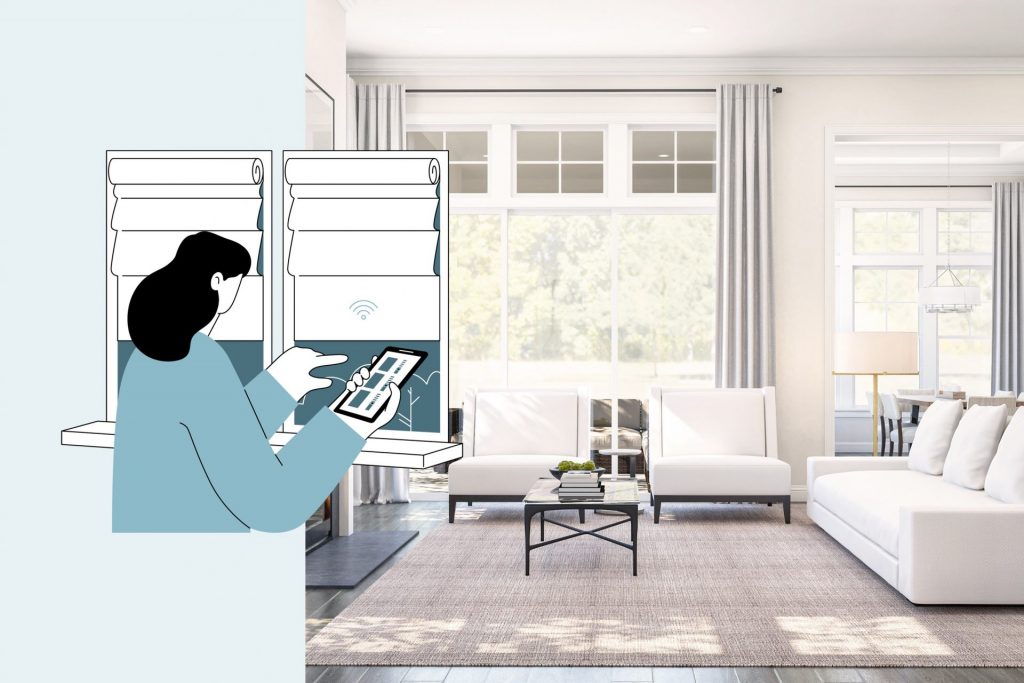
K. Hovnanian Homes provides a range of Smart Home Solutions products designed for seamless integration within new home construction projects:
- Wi-Fi Thermostats: These thermostats offer remote access, energy-saving features, and integration with voice assistants, making them ideal for modern home climate control.
- Video Doorbells: K. Hovnanian’s video doorbells provide real-time video, motion detection, and integration with smart locks, offering enhanced security and control for homeowners.
- Keyless Door Entry: The keyless entry system from K. Hovnanian Homes offers secure and convenient access control, integrating seamlessly with other smart home security features.
- Smart Switches: These switches provide remote control, scheduling, and energy monitoring, contributing to energy efficiency and seamless integration with other smart home systems.
Creating a Responsive and Efficient Living Space
The integration of smart home features into new home construction extends beyond mere technology adoption. It’s about crafting a living space that can adapt and respond to the needs of its inhabitants. By incorporating these technologies, homeowners can create a living space that is not only convenient and energy-efficient but also tailored to their individual preferences and requirements.
K. Hovnanian Homes offers a variety of Smart Home Solutions products for homebuyers, including wi-fi thermostats, video doorbells, keyless door entry, and smart switches.
The incorporation of these smart house essentials into a new construction home is more than just embracing technology. It’s about creating a living space that can adapt, respond, and evolve, ensuring that the home of tomorrow provides a sanctuary of ease and efficiency.
For those ready to take the next step in building the home of tomorrow, tour one of our amazing communities and learn more about smart home technology with K. Hovnanian.
Interested in New Construction with Smart Home Essentials? At K. Hovnanian Homes, with meticulous attention to detail and excellent customer service, we take pride in building beautiful new construction homes and communities across the nation – with a wide offering of homes and designs, you can be sure to find a new home to fit both your lifestyle and your budget.
Contact us today or browse our collection of New Construction Homes to find a K. Hovnanian Community near you!
Last Updated on December 5, 2024
